Hats, real hats, are cool again. Problem is, lots of people don't get the etiquette. One spiv at a recent Savile Row gig actually had a Homburg on in the ballroom of the Savoy. This has sent me into a quietly-internalised fury. He didn't even have the decency to touch the brim of it - let alone take it off - when he was introduced to a lady. And yes I might be old-fashioned, but the point is, if you're going to bust out in old school threads and act all entitled, then you should also do you homework and wear them right - as in, with the right attitude and an understanding of how, where and why they came about. SO that's the mini-rant, and it provoked some hatology (a lot of this is from Wikipedia):
1. Homburg
 A homburg is a felt hat characterized by a single dent running down the center of the crown and a brim fixed in a tight, upwards curl. It is superficially similar to the trilby and fedora; however, those types of hat have soft, snappable brims and can have various designs pinched into the crown, whereas the shape of a homburg is fixed.
A homburg is a felt hat characterized by a single dent running down the center of the crown and a brim fixed in a tight, upwards curl. It is superficially similar to the trilby and fedora; however, those types of hat have soft, snappable brims and can have various designs pinched into the crown, whereas the shape of a homburg is fixed.
The homburg is typically made from wool or fur felt and has a grosgrain hatband and brim treatment with an optional feather. A variant form is the lord's hat", which lacks the edge ribbon, and may, optionally, be pinched.
It was popularized by Edward VII after he visited Bad Homburg in Hesse, Germany, and brought back a hat of this style. Like the trilby or fedora, the homburg was once quite popular and is still available in almost any color, but the most common colors are black, grey, and brown. In Britain a black homburg became widely known in the 1930s as an "Anthony Eden" after the Government Minister of that name.
In formality, the homburg ranks just below the top hat, and above hats such as the bowler or fedora. It is appropriate (often with a topcoat) with a stroller (which is morning dress but with a suit jacket) or with black tie.
2. Trilby
 Although also used as a synonym for a short-brimmed fedora in the United Kingdom, the trilby is distinguished by a very narrow brim that is sharply turned up in the back and a short crown, which is pinched in the front and indented into a teardrop shape in the center. The hat's name derives from the stage adaptation of George du Maurier's 1894 novel Trilby; a hat of this style was worn in the first London production of the play, and promptly came to be called "a Trilby hat".
Although also used as a synonym for a short-brimmed fedora in the United Kingdom, the trilby is distinguished by a very narrow brim that is sharply turned up in the back and a short crown, which is pinched in the front and indented into a teardrop shape in the center. The hat's name derives from the stage adaptation of George du Maurier's 1894 novel Trilby; a hat of this style was worn in the first London production of the play, and promptly came to be called "a Trilby hat".
Traditionally it was made from rabbit hair felt, but is now sometimes made from other materials, including tweed, straw, and wool. The hat reached its zenith in the 1960s, when it supplanted the wider brimmed fedora; the steadily lowering roofs of previously taller American automobiles made it impractical to wear a hat with a larger brim and tall crown while driving. It faded from popularity in the 1970s when any type of men's headwear became obsolete, and men's fashion instead began focusing on highly maintained hairstyles.
The hat resurged in popularity in the early 2000s, when it was marketed to both men and women in an attempt to capitalize on a retro fashion trend. The hat has remained popular with both sexes into the 2010s, with various manufacturers experimenting with different patterns and emblazoning logos and other designs into the sides of the hat.
The hat has been associated with jazz, ska and soul musicians, as well as members of the indie, rude boy, mod, and 2 Tone subcultures.
A notable wearer of the trilby is Frank Sinatra. Sean Connery wore one in the first five James Bond movies, until changing trends necessitated that the suave character stop wearing a hat, lest he be seen as anachronistic or outdated by young filmgoers.
Bondclothes says: "The example above from Dr. No was dark grey, with the grosgrain band in a slightly lighter grey. In From Russia With Love and Goldfinger he can be seen with a dark brown trilby and goes back to a grey one in Thunderball. Connery can last be seen carrying one in You Only Live Twice. George Lazenby wore a navy blue tribly in On Her Majesty's Secret Service, but his had a wider grosgrain ribbon. Connery wore his with either suits or blazers whilst Lazenby also wore his with a dinner suit and his wedding attire. Roger Moore brought back the trilby in the 1980s though he never actually wore one, only throwing his on the rack when entering the office."
3. Ushanka
 An ushanka (Literally "ear hat") is a Russian fur cap with ear flaps that can be tied up to the crown of the cap, or tied at the chin to protect the ears, jaw and lower chin from the cold. The thick dense fur also offers some protection against blunt impacts to the head. While no match for a helmet, it offers protection far superior to that of a typical beanie cap should the wearer fall and hit his or her head against ice or packed snow. The word Ushanka derives from ushi (у́ши), "ears" in Russian.
An ushanka (Literally "ear hat") is a Russian fur cap with ear flaps that can be tied up to the crown of the cap, or tied at the chin to protect the ears, jaw and lower chin from the cold. The thick dense fur also offers some protection against blunt impacts to the head. While no match for a helmet, it offers protection far superior to that of a typical beanie cap should the wearer fall and hit his or her head against ice or packed snow. The word Ushanka derives from ushi (у́ши), "ears" in Russian.
Of course, it's not just Russian - hats with flexible earflaps made out of fur have been known in Russia, Germany and Scandinavia for centuries, not to mention ancient Scythians and various nomads of the Central Asia - but has always been seen as THE Soviet headgear. Soviet Russia. Photographs of US President Gerald Ford wearing the cap during a 1974 visit to the Soviet Union (above) were seen as a possible sign of Détente. In 1991, with the fall of the Soviet Union came the first wave of commercially imported Russian winter hats into the West.
4. Flat cap
 A Flat Cap, also known as a Sixpence, Scally Cap, Ivy Cap, Irish Cap, Tweed Cap, Salmon Hat, UNION Cap, Dai Cap, Jeff Cap, Windsor Cap, Touring Cap, Driving Cap, or Newspaper Cap, Cheesecutter Cap. It is a rounded men's cap with a small stiff brim in front. Cloths used to make the cap range from wool, tweed (most common) to cotton driving caps for summer wear, sometimes featuring air vents. Less common materials may include leather. Cord flat caps are also worn in various colors. The inside of the cap is usually lined with silk for comfort and warmth.
A Flat Cap, also known as a Sixpence, Scally Cap, Ivy Cap, Irish Cap, Tweed Cap, Salmon Hat, UNION Cap, Dai Cap, Jeff Cap, Windsor Cap, Touring Cap, Driving Cap, or Newspaper Cap, Cheesecutter Cap. It is a rounded men's cap with a small stiff brim in front. Cloths used to make the cap range from wool, tweed (most common) to cotton driving caps for summer wear, sometimes featuring air vents. Less common materials may include leather. Cord flat caps are also worn in various colors. The inside of the cap is usually lined with silk for comfort and warmth.
The style can be traced back to the 14th century in United Kingdom and parts of Italy, when it was more likely to be called a "bonnet". A 1571 Act of Parliament to stimulate domestic wool consumption and general trade decreed that on Sundays and holidays, all males over 6 years of age, except for the nobility and persons of degree, were to wear caps of wool manufacture on force of a fine (3/4d (pence) per day). The Bill was not repealed until 1597, though by this time, the flat cap had become firmly entrenched in English psyche as a recognized mark of a non-noble subject; be it a burgher, a tradesman, or apprentice. The style survives as the Tudor bonnet in some styles of academic dress.
Flat caps were almost universally worn in the 19th century by working class men throughout Britain and Ireland, and versions in finer cloth were also considered to be suitable casual countryside wear for upper-class English men (hence the contemporary alternative name golf cap). Flat caps were worn by fashionable young men in the 1920s.
The stereotype of the flat cap as purely "working class" was never correct. They were frequently worn in the country, but not in town, by middle and upper-class males for their practicality. Mather says: "A cloth cap is assumed in folk mythology to represent working class, but it also denotes upper class affecting casualness. So it is undoubtedly classless, and there lies its strength. A toff can be a bit of a chap as well without, as it were, losing face."
Roll one up and chuck it in your pocket. Keep a few in different colours. Whatever. But don't wear them back to front. Ever.
5. Fedora
 A fedora is usually felt, creased lengthwise down the crown and pinched in the front on both sides. The creasing does not define the hat, however. Fedoras can also be creased with teardrop crowns, diamond crowns, center dents, and others, and the positioning of pinches can vary if they are found at all. Early on, fedoras were sold open crown, meaning they were uncreased, with the owner creating his/her own crease manually. By the 1950s, hat makers started blocking the various creases into the hats when they were made. This is now the standard. The brim goes all the way around the crown and can be left raw edge, finished with a sewn overwelt or underwelt, bound with grosgrain ribbon, or finished with a self-felted cavanagh edge. Traditionally, fedoras have grosgrain hat bands. A trilby is similar to a fedora, but typically has a narrower brim, and the back of the brim is distinctively more sharply upturned as a result.
A fedora is usually felt, creased lengthwise down the crown and pinched in the front on both sides. The creasing does not define the hat, however. Fedoras can also be creased with teardrop crowns, diamond crowns, center dents, and others, and the positioning of pinches can vary if they are found at all. Early on, fedoras were sold open crown, meaning they were uncreased, with the owner creating his/her own crease manually. By the 1950s, hat makers started blocking the various creases into the hats when they were made. This is now the standard. The brim goes all the way around the crown and can be left raw edge, finished with a sewn overwelt or underwelt, bound with grosgrain ribbon, or finished with a self-felted cavanagh edge. Traditionally, fedoras have grosgrain hat bands. A trilby is similar to a fedora, but typically has a narrower brim, and the back of the brim is distinctively more sharply upturned as a result.
You wear them back on your head, with the front brim bent a little forward and shading your eyes. They don't have to be perfect - a little personalisation improves them. A fedora looks good with a trench coat, over a rough suit. Not so much with the whole jeans thing. I have a feeling that Paul McGann wears one in the last scene of Withnail & I.
The term fedora was in use as early as 1891. Originally a women's fashion into the 20th century, the fedora came into use in about 1919 as a men's middle-class clothing accessory. Its popularity soared, and eventually it eclipsed the similar-looking Homburg by the 1920s. The name comes from the title of an 1882 play by Victorien Sardou, Fédora, written for Sarah Bernhardt. The play was first performed in the U.S. in 1889. Bernhardt played Princess Fédora, the heroine of the play, and she wore a hat similar to what is now considered a fedora.
6. Bowler
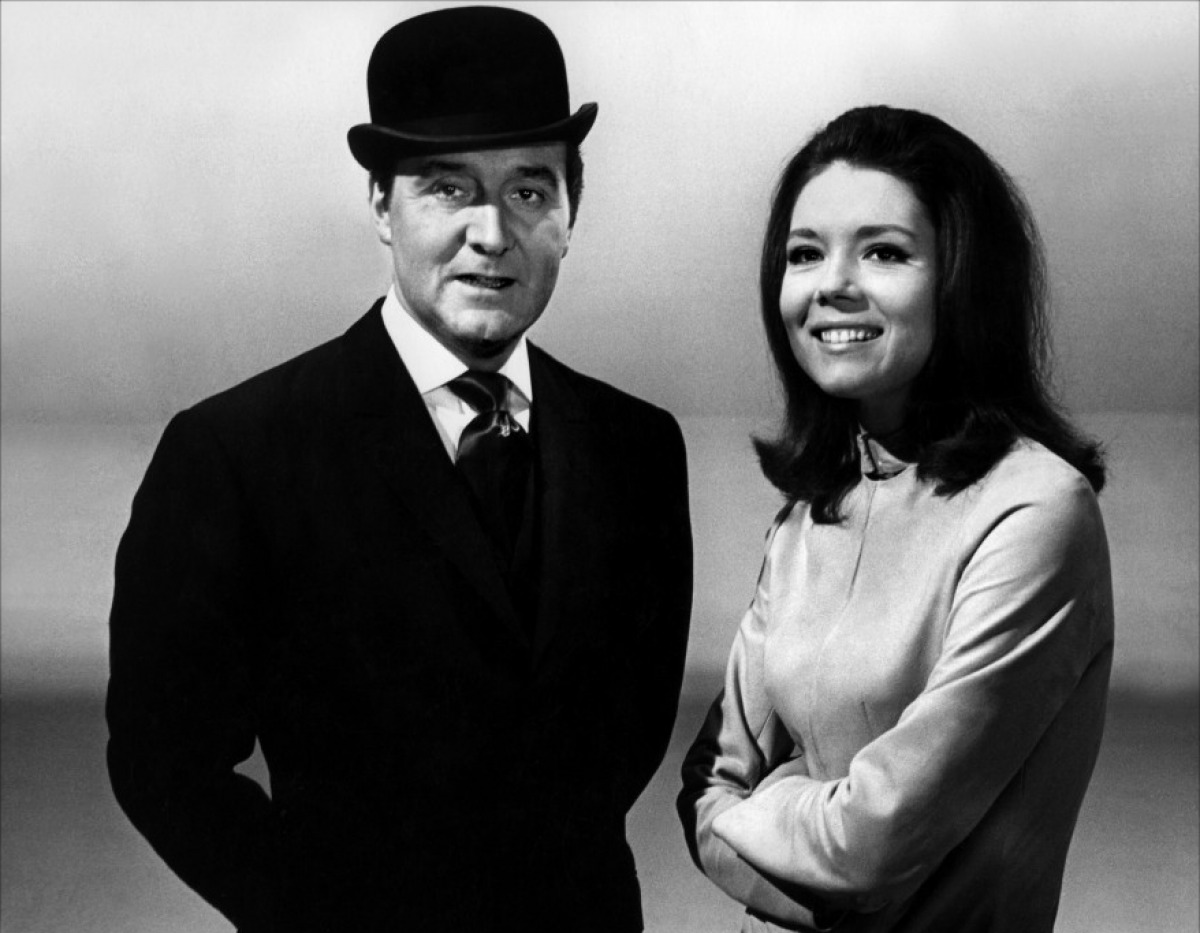 In France they call a bowler hat a "chapeau melon". I actually don't think we're quiiiite ready to have these bad boys back just yet. Bowlers were devised in 1849 by the London hatmakers Thomas and William Bowler to fulfil an order placed by the firm of hatters Lock & Co. of St James's. Lock & Co. had been commissioned by a client (British soldier and politician Edward Coke, the younger brother of the 2nd Earl of Leicester) to design a close-fitting, low-crowned hat to protect his gamekeepers' heads from low-hanging branches while on horseback. The keepers had previously worn top hats, which were easily knocked off and damaged.
In France they call a bowler hat a "chapeau melon". I actually don't think we're quiiiite ready to have these bad boys back just yet. Bowlers were devised in 1849 by the London hatmakers Thomas and William Bowler to fulfil an order placed by the firm of hatters Lock & Co. of St James's. Lock & Co. had been commissioned by a client (British soldier and politician Edward Coke, the younger brother of the 2nd Earl of Leicester) to design a close-fitting, low-crowned hat to protect his gamekeepers' heads from low-hanging branches while on horseback. The keepers had previously worn top hats, which were easily knocked off and damaged.
When Coke arrived in London on 17 December 1849 to collect his hat, he reportedly placed it on the floor and stamped hard on it twice to test its strength; the hat withstood this test and Coke paid 12 shillings for it. In accordance with Lock & Company's usual practice, the hat was called the "Coke" hat (pronounced “cook”) after the customer who had ordered it. This is most likely why the hat became known as the "Billy Coke" or "Billycock" hat (as well as a "Derby").
The Bowler hat has also been worn by Quechua and Aymara women in Peru and Bolivia since the 1920s, when it was introduced to Bolivia by British railway workers. Another region that appreciates the Bowler hat is the Niger Delta area of Nigeria. The men of this region use this hat as a fashion accessory along with a walking stick. These fashion accessories which have now become a staple part of the regional costume were introduced by British colonials in the 1900s
So: originally a riding hat for gamekeepers which then went from countryside to town.
Bowler bonus: it was the Bowler and not cowboy hats like the Stetson or sombrero that was the most popular hat in the American West, prompting Lucius Beebe to call it "the hat that won the West." Both cowboys and railroad workers preferred the hat because it wouldn't blow off as easily in strong wind, or when sticking one's head from the window of a speeding train. It was worn by both lawmen and outlaws, including Bat Masterson, Butch Cassidy and Billy the Kid.
7. Boater
 A boater (also basher, skimmer, cady, katie, somer, or sennit hat) is a kind of hat associated with sailing and boating.
A boater (also basher, skimmer, cady, katie, somer, or sennit hat) is a kind of hat associated with sailing and boating.
It is normally made of sennit straw and has a stiff or soft flat crown and brim, typically with a ribbon around the crown, which is often in colours representing a school, rowing crew or similar institution. Boaters were popular as summer headgear in the late 19th century and early 20th century, and were supposedly worn by FBI agents as a sort of unofficial uniform in the pre-war years. Nowadays they are rarely seen except at sailing or rowing events, period theatrical and musical performances (e.g. barbershop music) or as part of old-fashioned school uniform, such as at Harrow School.
Being made of straw, the boater was and is generally regarded as a warm-weather hat. In the days when men all wore hats when out of doors, "Straw Hat Day", the day when men switched from wearing their winter hats to their summer hats, was seen as a sign of the beginning of summer. The exact date of Straw Hat Day might vary slightly from place to place. For example, in Philadelphia, it was May 15; at the University of Pennsylvania, it was the second Saturday in May.
The boater is a fairly formal hat, equivalent in formality to the Homburg, and so is correctly worn either in its original setting with a blazer, or in the same situations as a Homburg, such as a smart lounge suit, or with black tie. John Jacob Astor IV (above, who built the Astoria and died on the Titanic) was known for wearing such hats.
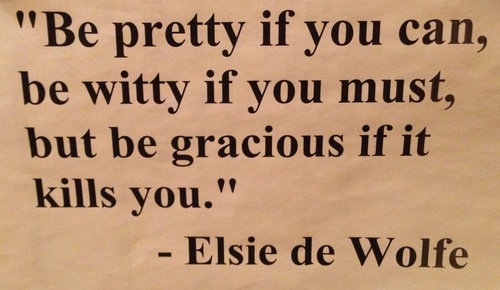 A nicely-put piece by Tom Chiarella in Esquire. Is "gracious" the right word? Perhaps not, gracious is...polite. I'd perhaps go for interested or something. Doesn't matter, the message works either way.
A nicely-put piece by Tom Chiarella in Esquire. Is "gracious" the right word? Perhaps not, gracious is...polite. I'd perhaps go for interested or something. Doesn't matter, the message works either way.

 Makes a change from "no trainers no hats no t-shirts".
Makes a change from "no trainers no hats no t-shirts". 
 1. Tourists walk 3.79 feet per second; 2. Smokers: 4.17 feet per second; 3. Cellphone users: 4.20 feet per second; 4. Headphone listeners: 4.64 feet per second; 5. Large pedestrians: 3.74 feet per second; 6. Men: 4.42 feet per second; 7. Women: 4.10 feet per second; 8. People with bags: 4.27 feet per second.
1. Tourists walk 3.79 feet per second; 2. Smokers: 4.17 feet per second; 3. Cellphone users: 4.20 feet per second; 4. Headphone listeners: 4.64 feet per second; 5. Large pedestrians: 3.74 feet per second; 6. Men: 4.42 feet per second; 7. Women: 4.10 feet per second; 8. People with bags: 4.27 feet per second. A homburg is a felt hat characterized by a single dent running down the center of the crown and a brim fixed in a tight, upwards curl. It is superficially similar to the trilby and fedora; however, those types of hat have soft, snappable brims and can have various designs pinched into the crown, whereas the shape of a homburg is fixed.
A homburg is a felt hat characterized by a single dent running down the center of the crown and a brim fixed in a tight, upwards curl. It is superficially similar to the trilby and fedora; however, those types of hat have soft, snappable brims and can have various designs pinched into the crown, whereas the shape of a homburg is fixed. Although also used as a synonym for a short-brimmed fedora in the United Kingdom, the trilby is distinguished by a very narrow brim that is sharply turned up in the back and a short crown, which is pinched in the front and indented into a teardrop shape in the center. The hat's name derives from the stage adaptation of George du Maurier's 1894 novel Trilby; a hat of this style was worn in the first London production of the play, and promptly came to be called "a Trilby hat".
Although also used as a synonym for a short-brimmed fedora in the United Kingdom, the trilby is distinguished by a very narrow brim that is sharply turned up in the back and a short crown, which is pinched in the front and indented into a teardrop shape in the center. The hat's name derives from the stage adaptation of George du Maurier's 1894 novel Trilby; a hat of this style was worn in the first London production of the play, and promptly came to be called "a Trilby hat". An ushanka (Literally "ear hat") is a Russian fur cap with ear flaps that can be tied up to the crown of the cap, or tied at the chin to protect the ears, jaw and lower chin from the cold. The thick dense fur also offers some protection against blunt impacts to the head. While no match for a helmet, it offers protection far superior to that of a typical beanie cap should the wearer fall and hit his or her head against ice or packed snow. The word Ushanka derives from ushi (у́ши), "ears" in Russian.
An ushanka (Literally "ear hat") is a Russian fur cap with ear flaps that can be tied up to the crown of the cap, or tied at the chin to protect the ears, jaw and lower chin from the cold. The thick dense fur also offers some protection against blunt impacts to the head. While no match for a helmet, it offers protection far superior to that of a typical beanie cap should the wearer fall and hit his or her head against ice or packed snow. The word Ushanka derives from ushi (у́ши), "ears" in Russian. A Flat Cap, also known as a Sixpence, Scally Cap, Ivy Cap, Irish Cap, Tweed Cap, Salmon Hat, UNION Cap, Dai Cap, Jeff Cap, Windsor Cap, Touring Cap, Driving Cap, or Newspaper Cap, Cheesecutter Cap. It is a rounded men's cap with a small stiff brim in front. Cloths used to make the cap range from wool, tweed (most common) to cotton driving caps for summer wear, sometimes featuring air vents. Less common materials may include leather. Cord flat caps are also worn in various colors. The inside of the cap is usually lined with silk for comfort and warmth.
A Flat Cap, also known as a Sixpence, Scally Cap, Ivy Cap, Irish Cap, Tweed Cap, Salmon Hat, UNION Cap, Dai Cap, Jeff Cap, Windsor Cap, Touring Cap, Driving Cap, or Newspaper Cap, Cheesecutter Cap. It is a rounded men's cap with a small stiff brim in front. Cloths used to make the cap range from wool, tweed (most common) to cotton driving caps for summer wear, sometimes featuring air vents. Less common materials may include leather. Cord flat caps are also worn in various colors. The inside of the cap is usually lined with silk for comfort and warmth. A fedora is usually felt, creased lengthwise down the crown and pinched in the front on both sides. The creasing does not define the hat, however. Fedoras can also be creased with teardrop crowns, diamond crowns, center dents, and others, and the positioning of pinches can vary if they are found at all. Early on, fedoras were sold open crown, meaning they were uncreased, with the owner creating his/her own crease manually. By the 1950s, hat makers started blocking the various creases into the hats when they were made. This is now the standard. The brim goes all the way around the crown and can be left raw edge, finished with a sewn overwelt or underwelt, bound with grosgrain ribbon, or finished with a self-felted cavanagh edge. Traditionally, fedoras have grosgrain hat bands. A trilby is similar to a fedora, but typically has a narrower brim, and the back of the brim is distinctively more sharply upturned as a result.
A fedora is usually felt, creased lengthwise down the crown and pinched in the front on both sides. The creasing does not define the hat, however. Fedoras can also be creased with teardrop crowns, diamond crowns, center dents, and others, and the positioning of pinches can vary if they are found at all. Early on, fedoras were sold open crown, meaning they were uncreased, with the owner creating his/her own crease manually. By the 1950s, hat makers started blocking the various creases into the hats when they were made. This is now the standard. The brim goes all the way around the crown and can be left raw edge, finished with a sewn overwelt or underwelt, bound with grosgrain ribbon, or finished with a self-felted cavanagh edge. Traditionally, fedoras have grosgrain hat bands. A trilby is similar to a fedora, but typically has a narrower brim, and the back of the brim is distinctively more sharply upturned as a result. In France they call a bowler hat a "chapeau melon". I actually don't think we're quiiiite ready to have these bad boys back just yet. Bowlers were devised in 1849 by the London hatmakers Thomas and William Bowler to fulfil an order placed by the firm of hatters Lock & Co. of St James's. Lock & Co. had been commissioned by a client (British soldier and politician Edward Coke, the younger brother of the 2nd Earl of Leicester) to design a close-fitting, low-crowned hat to protect his gamekeepers' heads from low-hanging branches while on horseback. The keepers had previously worn top hats, which were easily knocked off and damaged.
In France they call a bowler hat a "chapeau melon". I actually don't think we're quiiiite ready to have these bad boys back just yet. Bowlers were devised in 1849 by the London hatmakers Thomas and William Bowler to fulfil an order placed by the firm of hatters Lock & Co. of St James's. Lock & Co. had been commissioned by a client (British soldier and politician Edward Coke, the younger brother of the 2nd Earl of Leicester) to design a close-fitting, low-crowned hat to protect his gamekeepers' heads from low-hanging branches while on horseback. The keepers had previously worn top hats, which were easily knocked off and damaged. A boater (also basher, skimmer, cady, katie, somer, or sennit hat) is a kind of hat associated with sailing and boating.
A boater (also basher, skimmer, cady, katie, somer, or sennit hat) is a kind of hat associated with sailing and boating. The Seat Monopolizer (July 1976)
The Seat Monopolizer (July 1976)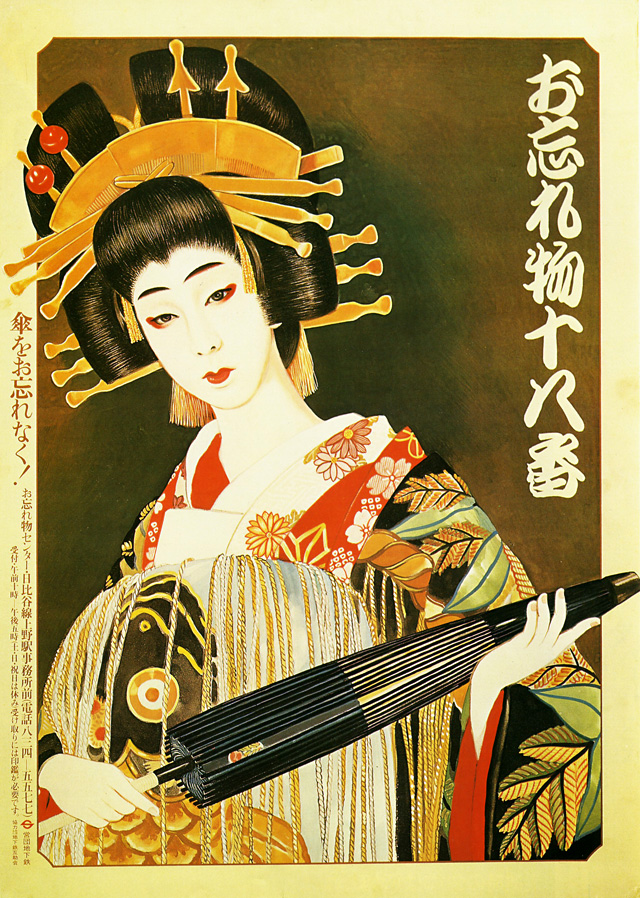 Don't forget your umbrella (June 1977)
Don't forget your umbrella (June 1977)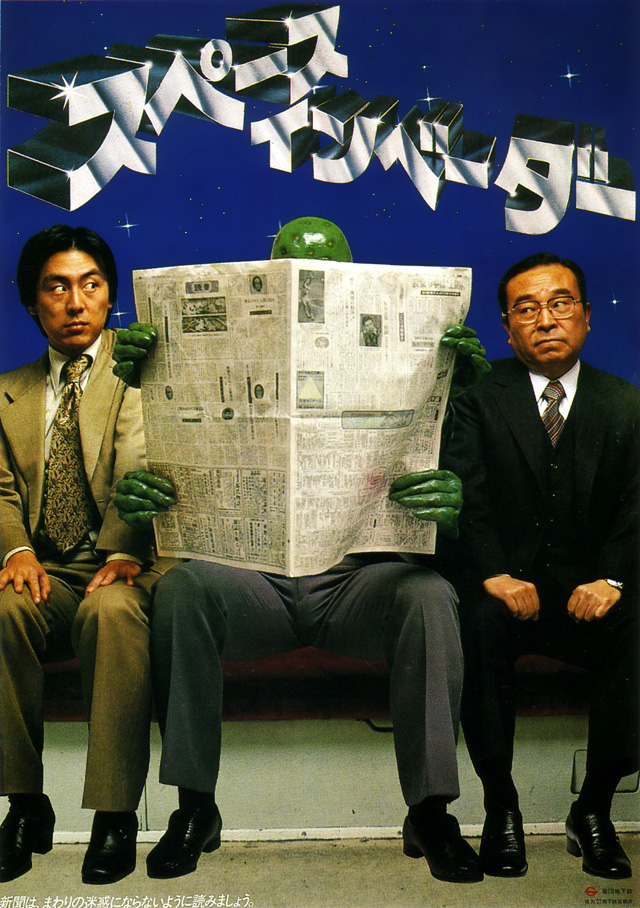 Space Invader (March 1979)
Space Invader (March 1979)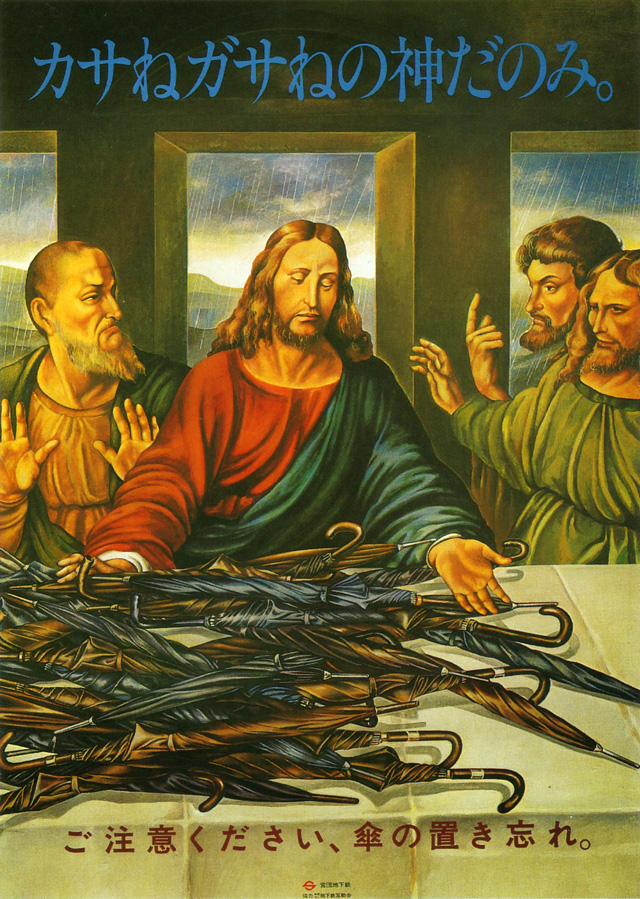 Don't forget your umbrella (October 1981)
Don't forget your umbrella (October 1981)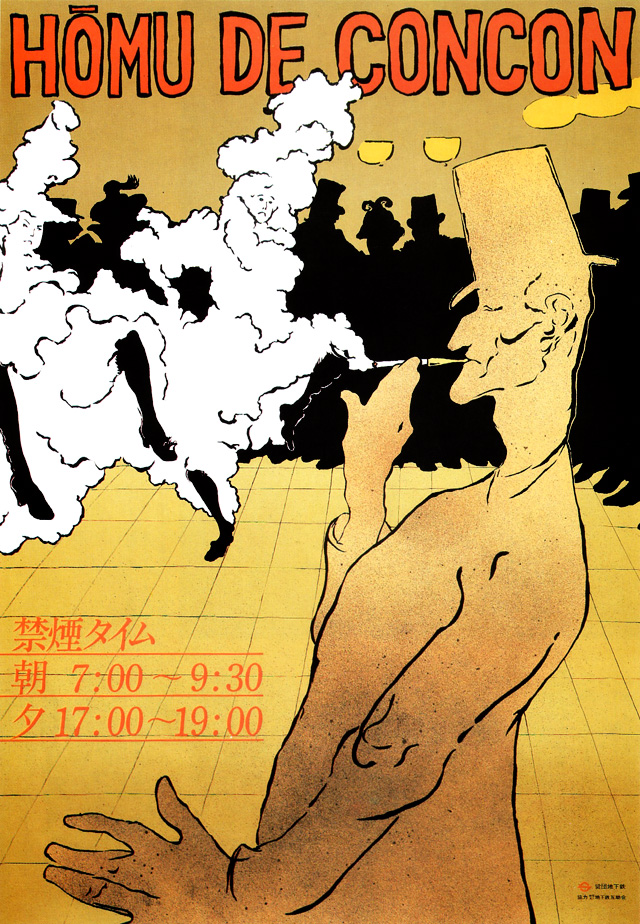 Coughing on the platform (January 1979)
Coughing on the platform (January 1979) Clearly show your train pass (September 1978)
Clearly show your train pass (September 1978)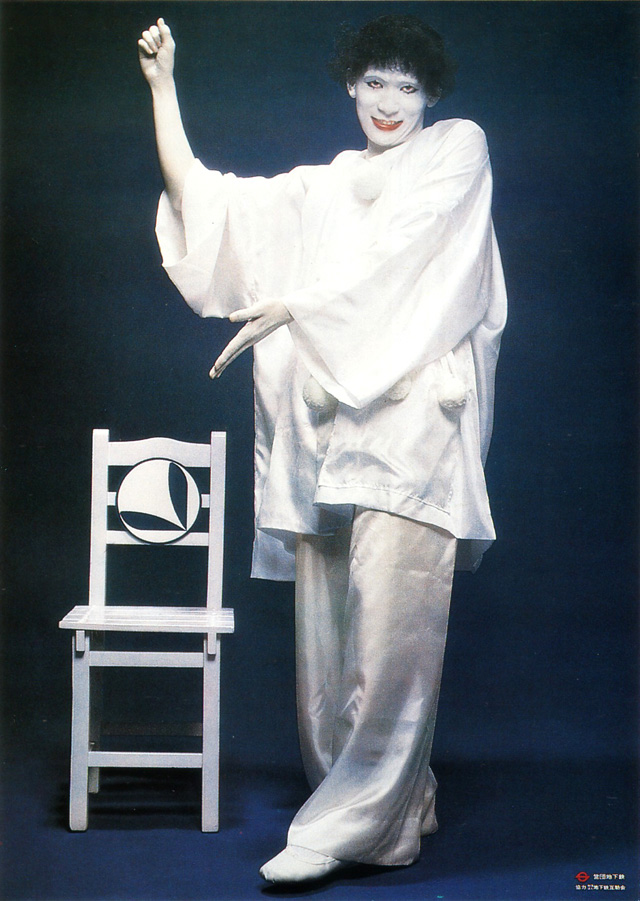 Marcel Marceau (October 1978)
Marcel Marceau (October 1978)